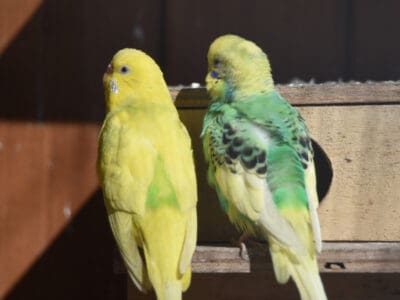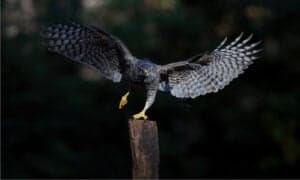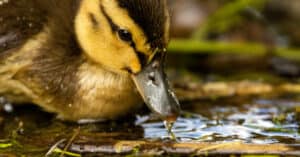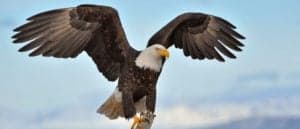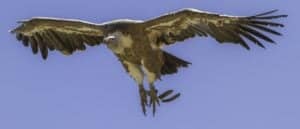What Do Ostriches Eat?
The ostrich is the planet’s largest living bird. A big male can stand 9 feet tall and weigh over 300 pounds, and the female lays the world’s biggest egg. The ostrich’s looks are a mix of the beautiful and the homely and hint at its dinosaur origins. The neck is long and barely covered with down, the eyes huge with long lashes, the legs long and scaly. One of its two ugly toes ends in what looks like a hoof. Yet the feathers are soft and fluffy, as they lack the barbs most feathers have. The white plumes of the male’s wings and tail were sought after by milliners and nearly led to the ostrich joining other huge flightless birds such as the giant moa on the extinction list. The bird is still raised in captivity for its feathers as well as its nutritious eggs, venison-like meat, and its hide, which makes a nice leather.
There are only two ostrich species left out of nine, and they are Struthio camelus, the common ostrich, and Struthio molybdophanes, the Somali ostrich. The common ostrich is the largest of the two. So, what sort of diet does this gigantic bird need to eat to keep it hale and hearty? Read on to learn.
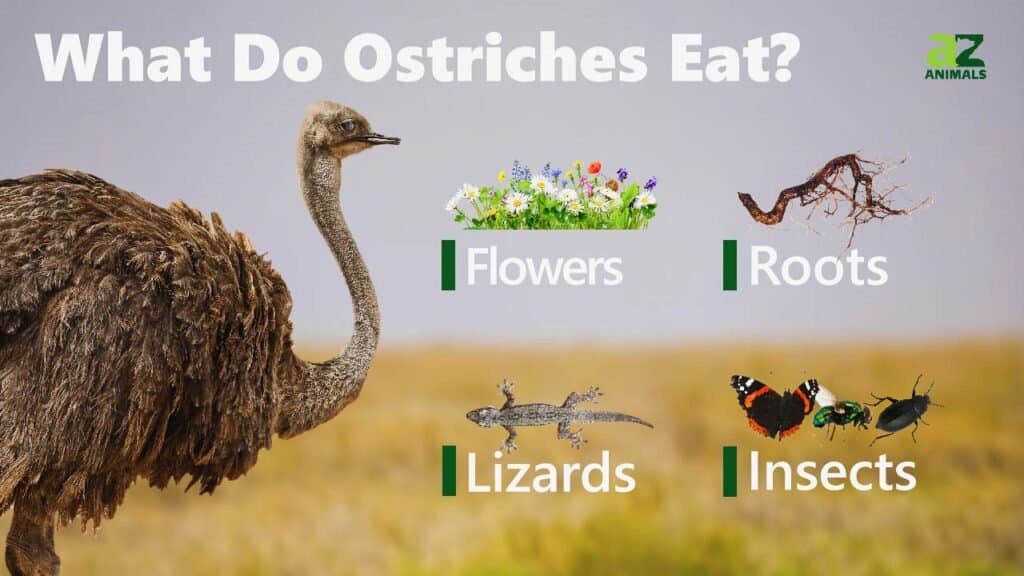
What Foods Do Ostriches Eat?
The ostrich is ultimately an omnivore, but it mostly eats plant material. These are:
- Flowers
- Berries
- Roots
- Green grass
- Seeds
- Leaves of shrubs and bushes
- Sprouts
- Nuts
- Succulents
But since it’s an omnivore, the ostrich has also been known to eat:
They’ll also scavenge the bodies of animals killed by large predators such as lions.
Ostriches swallow sand and small rocks that become gastroliths. They do this both in the wild and in captivity. Gastroliths help the bird, which is toothless, grind up its food. Yet, the ostrich lacks a crop, which is a sort of pouch in the top part of the GI tract that stores food until it’s ready to be digested. Many types of flightless birds lack a crop. The ostrich also doesn’t have a gall bladder.

iStock.com/slowmotiongli
What Animals Eat Ostriches?
Very few animals, even large carnivores, will tackle a grown ostrich. It can run over 50 miles per hour for one thing, and if it’s cornered, it can deliver a potentially fatal kick with its long and powerful legs. The one predator that can take on an ostrich is the human, which is a reason why most ostrich species are extinct and why the conservation status of the Somali ostrich is listed as vulnerable in the wild.
Natural predators of ostriches include:
Even these apex predators have better luck with a young or baby ostrich than they would with an adult. Smaller predators have better luck stealing eggs or chicks. These include:
Next Up: New Study: Baleen Whales Once Consumed Over Twice the Amount of Today’s Global Fisheries
FAQs (Frequently Asked Questions)
Do ostriches eat meat?
As omnivores, ostriches are able to eat meat in the form of small animals. They also scavenge from carcasses.
What do ostriches eat in captivity?
Ostriches that are kept in captivity are fed a special formula made for ratites, which are flightless birds. Because ostriches are so big, they need a great deal of protein to stay healthy, especially those who are growing or reproducing. The formulas, which are divided into starter, grower and mature categories, give the ostriches the right amount of vitamins and minerals at each stage of life.
What do baby ostriches eat?
In the wild, a baby ostrich isn’t fed by its parents, but its father guides them to places where food is present, and it serves itself. In captivity, some ostrich farmers don’t feed a baby ostrich for as long as a week, for it gets the nutrition it needs from its yolk sac. After the yolk is depleted, farmers give the chick starter feed. When it is two months to about two years old, it’s given grower feed. The food is supplemented with fresh fruits, vegetables and grains, but these food items shouldn’t be more than 20 percent of the ostrich’s diet.
Do ostriches eat grass?
Ostriches do eat grass as well as other plant materials such as seeds, flowers and leaves.
What are ostriches’ predators?
Ostriches don’t have many predators. Even large predators would be wary about trying to attack a flock of chicks as they are guarded by their parents, including their father, the flock’s alpha male. One of the few predators that would have some success in taking down a grown ostrich is the cheetah, and that’s because the big cat can outrun the big bird for short distances. Other predators on adult ostriches and chicks include Egyptian vultures and other birds of prey, mongoose, lions, crocodiles, leopards and warthogs.
What is an ostrich’s favorite food?
In the wild, an ostrich probably can’t be too picky about its diet. It lives in semiarid areas where food and water can be scarce. As an omnivore, it can eat both plant and animal food that it finds. In captivity, it seems they are partial to fruits and vegetables such as carrots, oranges and brassicas. However, the farmer needs to be careful to cut these items up so the bird doesn’t swallow them whole and choke. These foods also shouldn’t be the main part of the diet.
More from A-Z Animals
The ostrich is the planet’s largest living bird. A big male can stand 9 feet tall and weigh over 300 pounds, and the female lays the world’s biggest egg. The ostrich’s looks are a mix of the beautiful and the homely and hint at its dinosaur origins. The neck is long and barely covered with down, the eyes huge with long lashes, the legs long and scaly. One of its two ugly toes ends in what looks like a hoof. Yet the feathers are soft and fluffy, as they lack the barbs most feathers have. The white plumes of the male’s wings and tail were sought after by milliners and nearly led to the ostrich joining other huge flightless birds such as the giant moa on the extinction list. The bird is still raised in captivity for its feathers as well as its nutritious eggs, venison-like meat, and its hide, which makes a nice leather.
There are only two ostrich species left out of nine, and they are Struthio camelus, the common ostrich, and Struthio molybdophanes, the Somali ostrich. The common ostrich is the largest of the two. So, what sort of diet does this gigantic bird need to eat to keep it hale and hearty? Read on to learn.

What Foods Do Ostriches Eat?
The ostrich is ultimately an omnivore, but it mostly eats plant material. These are:
- Flowers
- Berries
- Roots
- Green grass
- Seeds
- Leaves of shrubs and bushes
- Sprouts
- Nuts
- Succulents
But since it’s an omnivore, the ostrich has also been known to eat:
They’ll also scavenge the bodies of animals killed by large predators such as lions.
Ostriches swallow sand and small rocks that become gastroliths. They do this both in the wild and in captivity. Gastroliths help the bird, which is toothless, grind up its food. Yet, the ostrich lacks a crop, which is a sort of pouch in the top part of the GI tract that stores food until it’s ready to be digested. Many types of flightless birds lack a crop. The ostrich also doesn’t have a gall bladder.

iStock.com/slowmotiongli
What Animals Eat Ostriches?
Very few animals, even large carnivores, will tackle a grown ostrich. It can run over 50 miles per hour for one thing, and if it’s cornered, it can deliver a potentially fatal kick with its long and powerful legs. The one predator that can take on an ostrich is the human, which is a reason why most ostrich species are extinct and why the conservation status of the Somali ostrich is listed as vulnerable in the wild.
Natural predators of ostriches include:
Even these apex predators have better luck with a young or baby ostrich than they would with an adult. Smaller predators have better luck stealing eggs or chicks. These include:
Next Up: New Study: Baleen Whales Once Consumed Over Twice the Amount of Today’s Global Fisheries

